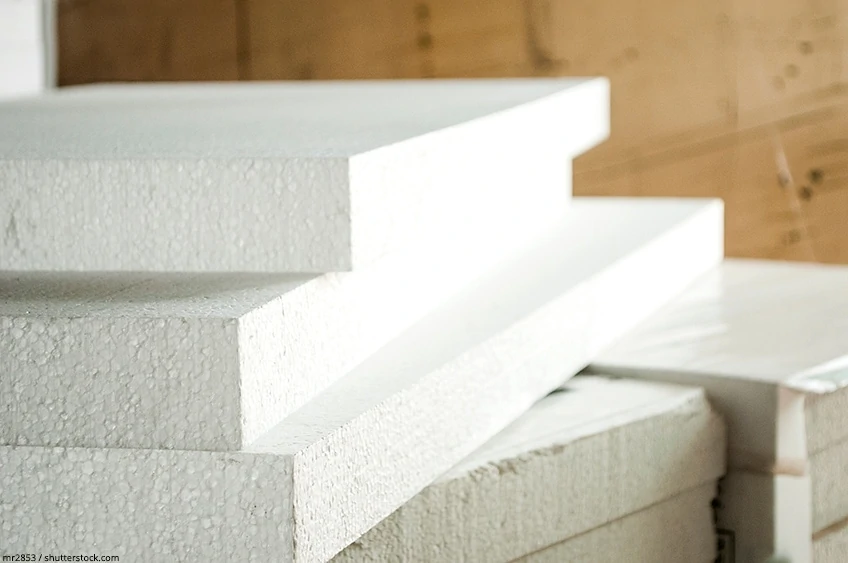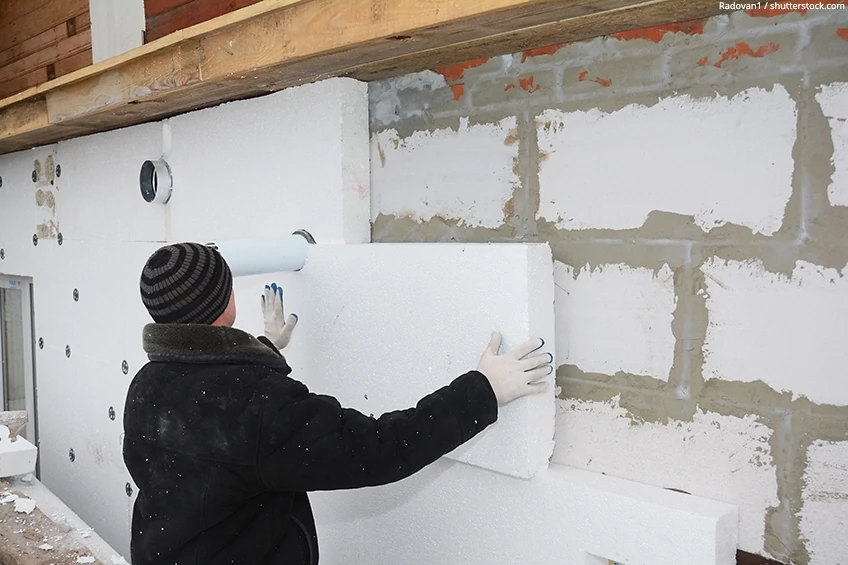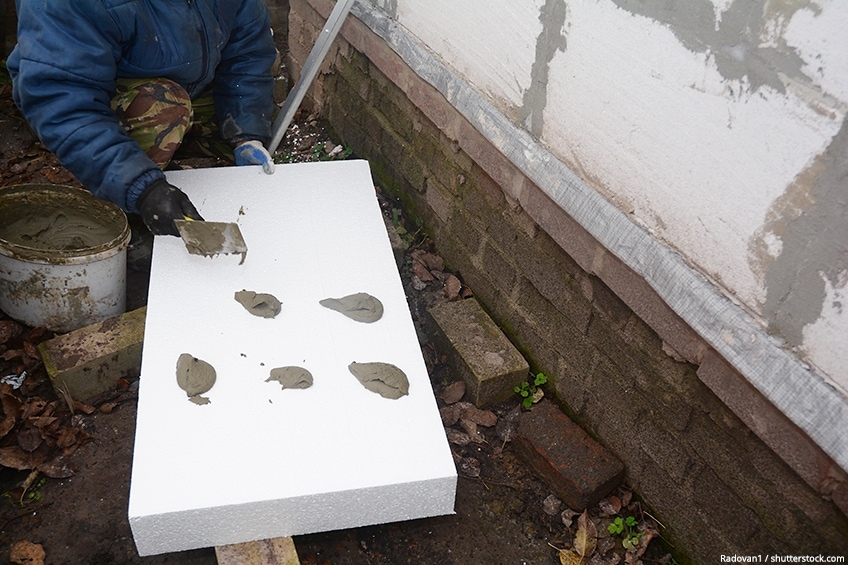Best Glue for Styrofoam – Guide on How to Glue Styrofoam
This post may contain affiliate links. We may earn a small commission from purchases made through them, at no additional cost to you. You help to support resin-expert.com
In order to successfully glue styrofoam, you not only need a little know-how, but also the right styrofoam adhesive. Because if you use the wrong glue, it can happen that the styrofoam simply dissolves. In our glue test and guide, we tell you how to glue styrofoam and which special glue is best suited for styrofoam.
Table of Contents
What Is Styrofoam?
Styrofoam is the brand name of the plastic polystyrene, which was discovered by Eduard Simon in 1839. Since 1950, it has been produced on a large scale.
Polystyrene is obtained from styrene by polymerization. Today, it is one of the five most widely used thermoplastics and is used in many different ways. It is used in particular for thermal insulation of houses and buildings. It is also frequently used for footfall sound insulation in buildings.
The construction industry, container construction, and the aviation industry use the positive properties of this material:
- It is very light
- It is cost effective
- Styrofoam is easy to process
- It is permeable to water vapor and oxygen
- Polystyrene can be colored in all shades
- It is resistant to aqueous alkalis and mineral acids
In addition to the industrial applications mentioned above, the food industry also enjoys the advantages of polystyrene. Styrofoam is often used as a packaging material for foodstuffs, as it is physiologically harmless.
Unfortunately it also has some disadvantages: It is not resistant to gasoline and solvents and is so brittle that it quickly breaks down into its individual components. Bonding polystyrene is not easy either, since it is a low-energy material. Therefore, special adhesives must be used to bond Styropor. These must not only be flame-retardant, but also solvent-free.
Choosing the right Styrofoam Adhesive
The choice of the right styrofoam adhesive depends on various things. First of all, it depends on the type of surface to which the polystyrene is to be glued. The following substrates are distinguished:
- Absorbent surfaces: natural stone, wood, concrete, plaster or plaster
- Non-absorbent surfaces: Ceramic tiles, metals, multi-purpose tiles with plastic coating or glass
The type of application is also important for the choice of polystyrene adhesive. Among other things, the required adhesive strength depends on this.
Normal adhesives, which are based on solvents in particular, are also not recommended. The solvent contained in them is capable of dissolving the polystyrene and thus destroying it gradually. Apart from this, unsightly stains often form when bonding with conventional adhesives. This is particularly annoying in visible areas that must be visually representative.
For this reason, you should pay attention to adhesives for polystyrene, which work without solvents. We will tell you which ones are in the following section.
An Overview of the Different Styrofoam Adhesives
As far as the special glue for styrofoam is concerned, you have the choice between the following:
- Polyurethane Foam: Polyurethane foam is a plastic adhesive foam that can be used not only for bonding polystyrene to polystyrene, but also for many other materials and material combinations. This special glue for styrofoam has the great advantage of being developed for both absorbent and non-absorbent surfaces. The respective variant can be chosen freely. It glues styrofoam permanently and without damage.
- Acrylic Adhesive: Bonding applications on non-absorbent surfaces benefit from a good acrylic adhesive. This is resistant to aging and UV light. Both one-component and two-component acrylic adhesives are available. For bonding polystyrene, the one-component variant is usually sufficient. A flash-off phase before bonding is mandatory for these adhesives.
- Epoxy Resin Glue: The same applies to epoxy resin adhesives as to acrylic adhesives. They are also available in two-component or one-component form. However, this adhesive does not usually require a flash-off time.
- Water-based Dispersion Adhesive: Dispersion adhesives are also most suitable for non-absorbent surfaces. A flash-off phase must also be observed when using them, as curing is effected by evaporation of the water contained in the adhesive. Dispersion adhesives are also on the market as spray adhesives. As such, they are ideally suited for large surfaces.
In general: If a flash-off time must be observed, all subsequent work should be able to wait until the adhesive has completely cured. This applies in particular to cladding and plastering of walls.
Caution is required when using a hot glue gun. Hot glue is in no case suitable for polystyrene, because this material is heat sensitive. It could be damaged by the hot glue.
But which glue for polystyrene is best suited? We have tested several of them and in the following sections we present the three winners in our Styropor Glue Test.
Special Polystyrene Adhesive for Small Areas: UHU Por Adhesive
An adhesive that is particularly suitable for small areas is the UHU Por Adhesive for Styrofoam. It scores not only with its fair price, but also offers other positive characteristics:
Pros
- This is a solvent-free and fast-drawing contact adhesive; it must therefore be applied on both sides and can thus develop its optimum adhesive power
- The resulting adhesive film is not only transparent and therefore very unobtrusive, but also elastic after curing
- The UHU Por adhesive is not only suitable for styrofoam, but also for many other materials
- With the help of the tiny cannula, the dosage is precise and perfect
Cons
- The adhesive is not suitable for PP and PE; for this you need a special adhesive
- The adhesive is also unsuitable for very small parts, as it sometimes takes a long time to set; it is also advisable to fix the glued parts, if this is possible
Apart from these two disadvantages, we could not detect any negative properties. The UHU Por adhesive is the first choice not only for polystyrene, but also for many other materials.
- Solvent-free and fast-drawing contact adhesive
- Transparent and therefore very unobtrusive, but also elastic after curing
- The UHU Por adhesive is not only suitable for styrofoam, but also for many other materials
PU Foam / Assembly Adhesive for Large Surfaces: Loctite Styrofoam Adhesive
The Loctite assembly adhesive is the polystyrene adhesive par excellence when it comes to bonding large areas. The color is inconspicuous and the application is so easy that even inexperienced do-it-yourselfers can easily handle it. But that is not all:
- The acrylic dispersion-based installation foam is perfectly suited for non-absorbent surfaces
- Even the initial adhesive force is so high that even difficult areas can be bonded optimally without having to fix the substrates
- The adhesive can be painted over
- It is resistant to both aging and weathering
- Not only polystyrene can be bonded with it, but also various other materials such as wood, mineral fibers or cork
We could only discover one disadvantage of this polystyrene adhesive, and that was its consistency. This is a bit too viscous, so that sometimes there can be problems when applying it. It is also difficult to remove hands or clothing. When using the adhesive, wear disposable gloves and make sure that the adhesive does not get on your clothes. Apart from that we give a crystal clear recommendation!
- Will not attack or burn through foam board
- Meets stringent State and Federal VOC regulations
- Bonds to most building materials
Spray Adhesive for Easy Application: 3M Spray Adhesive
The 3M Spray Adhesive Permanent is so to speak the all-rounder is our styrofoam adhesive test. It glues especially large areas permanently and durably and is very easy to apply due to the practical spray nozzle. Furthermore, it is suitable for many materials, including wood, various plastics and felt. But there are even more advantages:
Pros
- The spray adhesive is available in different can sizes
- Due to the two-dimensional, but very thin application, no ugly streaks occur when bonding films and fabrics
- The adhesive is highly resistant to mechanical stress
- It is free from silicone
Cons
- The smell of this spray glue can be a little annoying, so we would recommend its use outdoors or in well-ventilated places; sensitive people should wear a breathing mask
We would only consider half of the high financial expenses for the adhesive as a disadvantage, because good quality usually has its price. From us the 3M spray adhesive receives an almost unlimited recommendation.
- A clear, lightweight aerosol adhesive
- Used for attaching lightweight trim material such as upholstery cloth and trunk liners to metal and other surfaces. May be used to bond styrofoam
- Ideal for position bonding applications where mechanical fasteners will be used.
- Dries to a low profile clear colo
Instructions for Styrofoam Gluing
Gluing polystyrene is simple if you use the right glue. Just follow our Styropor bonding step-by-step instructions. We will show you exactly how to do it by gluing styrofoam panels.
Preparatory Work and Materials
The following materials are required for bonding polystyrene boards:
- The polystyrene plates and strips
- A sharp knife for cutting
- A serrated spatula
- A work surface, for example a table; this should either be protected or easy to clean
- PU Foam
First, lay out everything you need to avoid unnecessary aisles.
Now you can draw a plan that you would like to follow. The next step is to cut the plates and strips to size and place them in the correct order as indicated on the plan. This way you can easily attach the panels and moldings to the wall one by one without having to cut them again and again. Plan cut-outs for cables if necessary.
If all polystyrene plates and strips are in front of the wall, you can work on the substrate. This must be completely flat, i.e. it must not have any uneven areas, otherwise the polystyrene plates may split and possibly even break after the gluing. Textured wallpaper, for example, must first be removed. Large dents can be sanded down; dents should be plastered. Afterwards, the wall must be completely dry, so that the adhesive can adhere well to it.
Now, the polystyrene plates can be glued.
Glue the Polystyrene Plates
To glue a styrofoam plate, place it in front of you with the backside facing upwards. The adhesive is now applied to the surface using a toothed spatula. Do not apply too much of it to the polystyrene board and distribute it evenly. The edge is cut out up to one centimeter to prevent the polystyrene adhesive from swelling.
Under no circumstances should polystyrene boards be glued at specific points, as this can also lead to the formation of gaps and damage to the material.
Now you can pick up the plate and attach it to the wall. Work with gentle pressure, but be careful to avoid damaging the polystyrene.
It is important to always start on the inside and work your way out. This way you can still cut the ends to size if necessary. At the edges a little distance should be kept so that the still damp polystyrene adhesive does not swell out.
After the first central plate you can attach the others. To work your way to the edge.
Curing Phase of the Polystyrene Adhesive
Styrofoam adhesives are usually fast-drawing, so that a long curing phase is not to be expected. On the contrary: special adhesive for polystyrene achieves a solid hand strength after only about five minutes.
However, this also means that you must work quickly when attaching the polystyrene plates. This is especially true if you notice gaps and have to move one or the other polystyrene plate a little bit.
Gap Filling with PU Foam
When working with polystyrene sheets, there are often smaller and larger gaps that need to be filled. This can be done with the help of PU foam. It should be solvent-free and be added slightly into the gaps. Outer edges can be easily filled with it and, after a curing phase of 24 hours, covered with polystyrene strips. Before this, any protruding hardened PU foam residues should be removed with a cutter knife to achieve a completely smooth surface..
Frequently Asked Questions
Which Is the Best Glue for Styrofoam?
The answer to this question depends on the substrate. If it is absorbent, PU foam can be used; for non-absorbent surfaces, a dispersion, acrylic or epoxy resin adhesive is more suitable.
How Can I Glue Styrofoam on Styrofoam?
You can easily glue styrofoam to styrofoam with standard wood glue, but this connection is by no means waterproof. Otherwise, solid special adhesives are suitable for Styropor, as recommended in this guide.
Gluing polystyrene is very simple if you use the right glue. Pay attention to the substrate and choose the optimal styrofoam adhesive for your purpose. We hope that we could give you a hand.







